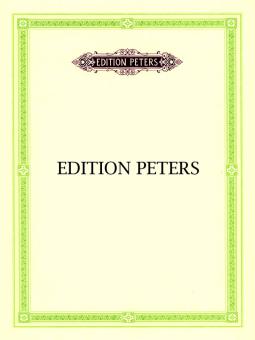Camille Saint-Saëns
Danse macabre
Piano Duet (1 Piano 4 Hands)
Camille Saint-Saëns
Danse macabre
Piano Duet (1 Piano 4 Hands)
- Compositor Camille Saint-Saëns
- Adaptador Wendy Hiscocks
- Editorial Edition Peters
- Nº de pedido EP7955
plazo de entrega 1-3 días laborables
IVA incluido.,
Más gastos de envío
No disponible en todos los países. Leer más
Descripción de la:
Saint-Saëns' Danse macabre has long been available in the composer's own sizzling transcription for two pianos.
By contrast, the standard piano duet arrangement of the piece (by Ernest Guiraud) appears to have been derived from the orchestral score and is often disappointingly thin. An obvious solution was to make the present new duet arrangement, following the composer's two-piano version as closely as possible.
As a symphonic poem Danse macabre was elaborated (in 1874) from Saint-Saëns' earlier song-setting of a poem by Henri Cazalis - a sort of French Tom O'Shanter without the chase, in which the devil, playing a mistuned fiddle, conjures skeletons from their graves at midnight into a macabre dance (Cazalis' profession as a doctor doubtless fed his imagination).
Saint-Saëns' orchestral version was the first orchestral score to use a xylophone, in a tune that he later recycled for 'Fossils' in Carnaval des animaux .
Roy Howat
By contrast, the standard piano duet arrangement of the piece (by Ernest Guiraud) appears to have been derived from the orchestral score and is often disappointingly thin. An obvious solution was to make the present new duet arrangement, following the composer's two-piano version as closely as possible.
As a symphonic poem Danse macabre was elaborated (in 1874) from Saint-Saëns' earlier song-setting of a poem by Henri Cazalis - a sort of French Tom O'Shanter without the chase, in which the devil, playing a mistuned fiddle, conjures skeletons from their graves at midnight into a macabre dance (Cazalis' profession as a doctor doubtless fed his imagination).
Saint-Saëns' orchestral version was the first orchestral score to use a xylophone, in a tune that he later recycled for 'Fossils' in Carnaval des animaux .
Roy Howat

